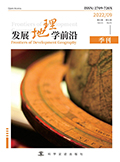

人口演变与城镇化是青藏高原生态安全屏障建设和可持续发展的关键影响变量。在详细描述1982年到2020年青海省人口与城镇化发展趋势、空间分布格局及其演变的基础上, 研究了青海省城镇化发展的主要问题及推动可持续城镇化的对策。研究发现过去38年青海省城镇化快速发展正成为推动青海人口格局演变的核心因素; 然而城镇人口过度集中于省会城市, 造成“一城独大”, 二三级城镇规模小、数量少, 城镇体系结构不合理; 重点城镇区发展受生态环境约束大, 面临着建设用地严重短缺及峡谷地形地貌的制约, 生态保护压力大; 城镇化地域发展不平衡, 城乡融合难度大等问题。研究提出以保护青藏高原生态环境和促进人民群众民生福祉“双赢”为基础, 构建“省域中心城市-区域中形成四-县城”为主干的三级高原特色城镇体系, 构建特色化绿色产业体系, 打造清洁城市, 打造三江源地区新型移民城镇化模式, 全面推动省域可持续城镇化发展。
Population evolution and urbanization are key variables affecting the construction and sustainable development of the ecological security barrier on the Qinghai-Tibet Plateau. Based on a detailed description of the development trend, spatial distribution pattern and evolution of population and urbanization in Qinghai Province from 1982 to 2020, this paper studies the main problems of urbanization development in Qinghai Province and the countermeasures to promote sustainable urbanization. The study found that the rapid development of urbanization in Qinghai Province in the past 38 years is becoming the core factor to promote the evolution of Qinghai' s population pattern. However, the urban population is excessively concentrated in the provincial capital city, resulting in “one city is the largest”, the second and third tier towns are small in scale and number, and the urban system structure is unreasonable. The development of key urban areas is constrained by the ecological environment, and faces the serious shortage of construction land and the constraints of canyon topography and geomorphology, and the pressure of ecological protection is great. The regional development of urbanization is unbalanced, and the integration of urban and rural areas is difficult. On the basis of protecting the ecological environment of the Qinghai-Tibet Plateau and promoting the “win-win situation” of people' s livelihood and well-being, the research proposes to build a threetier plateau characteristic urban system with “central city of the province and four county towns in the region” as the main task, build a characteristic green industry system, build a clean city, and build a new model of immigration and urbanization in the Sanjiangyuan region, and to comprehensively promote the sustainable urbanization development in the province.